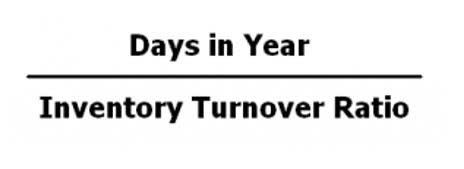
It is a temporary account used in the periodic inventory system to record the purchases of merchandise for resale. A periodic inventory system requires less bookkeeping, as there is no need to have separate accounting for raw materials, work in progress, and finished inventory. You take the beginning inventory costs for a period, add the cost of inventory purchases during the interval and subtract the cost of your remaining inventory after you’ve gathered your ending count.

If the physical
count shows more inventory on-hand that what the perpetual balance
shows then Inventory is debited and Inventory Over and Short is
credited. The purchases made during the year are $ 2,500,000, and after physical verification, it is found that the company had an inventory of $ 650,000 as the company follows the periodic inventory system. Calculate the COGS and suggest how the sales can be derived, and verify that there is any pilferage or loss of inventory. Say a merchandising company uses a periodic inventory system and evaluates their merchandise at the end of the year. This means that any changes in inventory from the sales or purchases the business makes that year are not recorded until December 31st.
What is the difference between periodic and perpetual inventory?
When a physical inventory count is done, the balance in the purchases account is then shifted into the inventory account, which in turn is adjusted to match the cost of the ending inventory. If you use a periodic system, you don’t know the exact number of units you have in stock until the end of the accounting period when you do your physical count of inventory. In contrast, the perpetual inventory system gives you real-time inventory counts because it updates each time a unit moves in or out of your inventory. The periodic inventory system refers to conducting a physical inventory count of goods/products on a scheduled basis. Maintaining physical inventories can be costly because the process eats up time and manpower. Thus, many companies only conduct physical inventory counts periodically.
The main benefits of employing a periodic inventory system are the ease of implementation, its lower cost and the decrease in staffing needed to run it. Simple counts on legal paper can suffice for collecting product data, especially if you only offer a few goods. A basic count during the day or week is often when the periodic inventory system is used enough for a small business to get an adequate handle on their inventory. This means there is no need for expensive or complicated equipment, just essential information collection tools – pen and paper. Periodic inventory is an accounting stock valuation practice that’s performed at specified intervals.
How to calculate COGS using the periodic inventory system
So, if you have 10 shirts available to sell and they cost $5 to produce, your cost of goods available is $50. Sometimes, a business will experience goods lost in transit, purchase returns, product recalls, and the like. With periodic inventory, however, there’s no way to account for these unexpected changes. A physical inventory count is also done to determine the period’s ending inventory balance during this time.
What Is Periodic Inventory System? How It Works and Benefits – Investopedia
What Is Periodic Inventory System? How It Works and Benefits.
Posted: Tue, 06 Dec 2022 08:00:00 GMT [source]
In simple words capital budgeting is an evaluation method and security analysis is the valuation method. Capital budgeting is done fro the data that is usually expected in nature whereas security analysis is done on the data which already exists in market. Remember, the discount does not apply to shipping costs that are passed through to the buyer. We hope our guide was helpful in understanding the basics of the periodic inventory system.
What is the periodic inventory system good for?
As its name implies, this solution requires physically taking inventory levels at designated periods. What sets the periodic inventory system apart is it only updates inventory ledgers at the end of a period by taking a physical count. Manufacturers, distributors, and retailers can benefit from periodic inventory systems, primarily if they sell in lower volumes and are looking for a simple inventory tracking method. Under a periodic review inventory system, the accounting practices are different than with a perpetual review system. To calculate the amount at the end of the year for periodic inventory, the company performs a physical count of stock.
- Perpetual systems also keep accurate records about the cost of goods sold and purchases.
- The other firms in the market can adopt a retaliation strategy if a firm does not cooperate.
- Keeping track of inventory is an essential part of maintaining smooth business operations.
- Purchase discounts or returns, allowances accounts, and so on are examples of contra accounts.
- So, instead of keeping track of the decrease or increase in merchandise every time a financial transaction occurs, businesses using periodic inventory do it at different time intervals.
- Start with a free account to explore 20+ always-free courses and hundreds of finance templates and cheat sheets.
Complete the closing entry at the end of the accounting period, after the physical count. You can calculate the COGS by using a balancing figure or the COGS formula. In this entry, the debits are in the ending inventory rows and the COGS row, and the credits are in the beginning inventory and the purchases rows. The gross profit method is an estimate of the ending inventory in the period. You can use this in the interim period, the time between physical counts, or to estimate how much stock you lost in the case of a catastrophic event.
Organisations use estimates for mid-year markers, such as monthly and quarterly reports. Accountants do not update the general ledger account inventory when their company purchases goods to be resold. The accountant removes the balance to another account at the end of the year.



Læg en kommentar